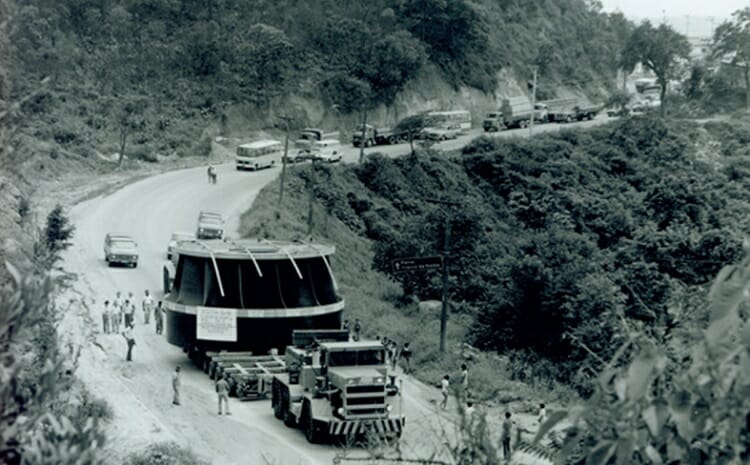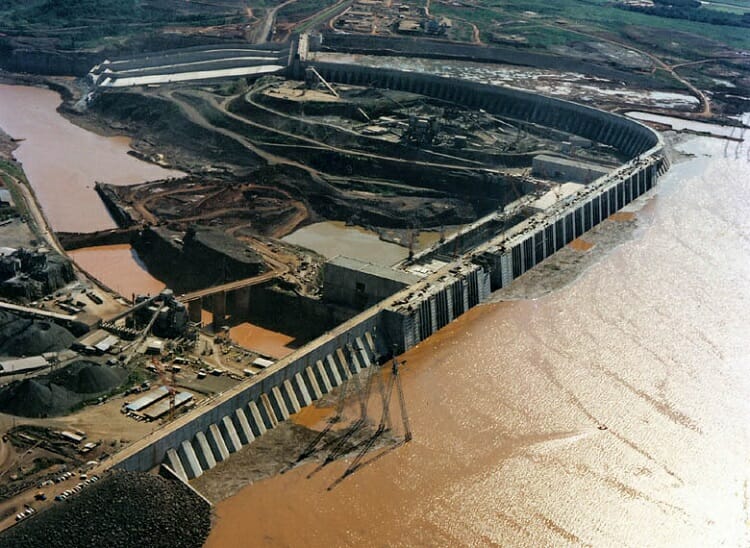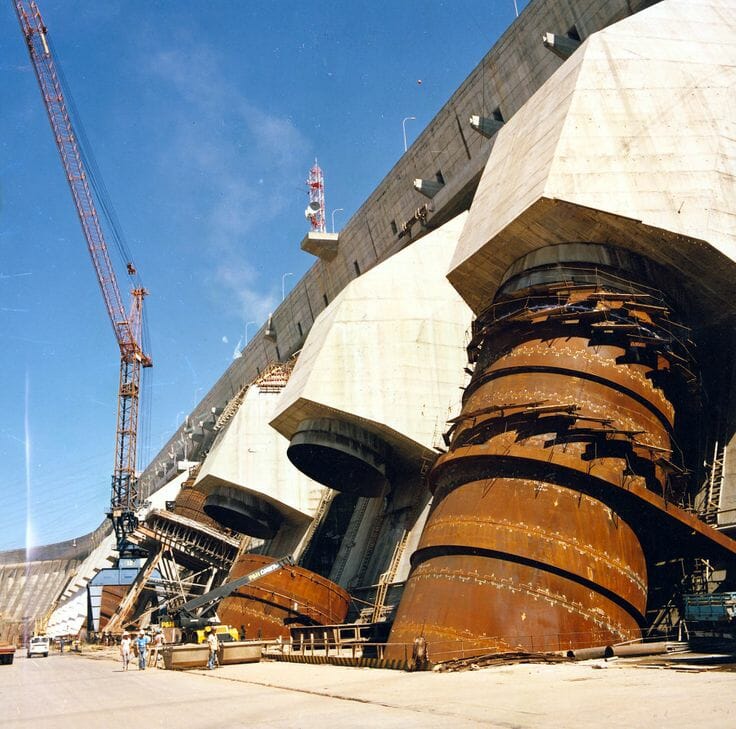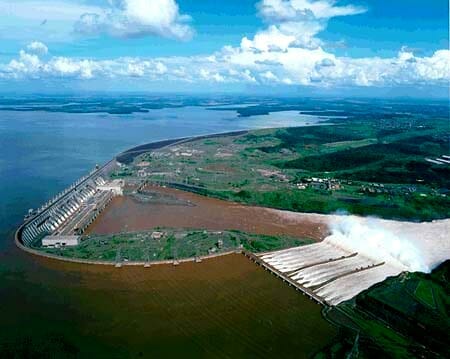01- What does ''Itaipu'' mean and why did it receive this name?
In 1973, some technicians traveled along the river to find out what would be the best point to build the Itaipu power plant, and after much research and studies, with the help of a ferry, the location was finally chosen.
Brazilians and Paraguayans found a stretch of river in the heart of South America, known as Itaipu, which in Tupi means ''the stone that sings''. After a few kilometers and a sharp bend in the Iguaçu River, there was an island, which was almost always submerged, which was also called Itaipu, and it was found that that point was exceptional, due to a long canyon excavated by the Paraná River.

02- First step of an epic
The construction of the Itaipu Binational it was considered a work of Hercules, by the magazine ''Popular Mechanics'' in the United States. The work began in 1974, as soon as the first machines arrived.
In the second half of that same year, the pioneer camp was built, with the first buildings for offices, cafeterias, warehouses, accommodation, gas stations, which still exist today.

03- City called Itaipu
The region began to transform into a ''human anthill'', between 1975 and 1978, several houses were built in the vicinity where the Itaipu Binational, to house the men who would be working on the works.
And during this period, Foz do Iguaçu was a small city, with just two paved streets and around 20 thousand inhabitants. Ten years later, with the arrival of workers to work at Itaipu Binacional, the population increased to 101.400 inhabitants.
At the construction sites, the first step was to change the course of the Paraná River, removing millions of cubic meters of earth and rock to excavate a 2km diversion.

04- Paraná River says goodbye to its bed
Itaipu became an irreversible reality, the excavation of the Paraná River diversion was completed within the stipulated deadline (October 20, 1978), more than 50 tons of dynamite exploded the cofferdams that protected the construction of the new course.
The diversion was more than 2km long, 90 meters deep and 150 meters wide. On the same day, a US$800 million contract was signed, which guaranteed the purchase of turbines and turbo-generators. The new canal would allow a section of the original riverbed to be dried to build the main concrete dam.
Itaipu Binacional was the only major national project that survived the most acute phase of the economic crisis at the end of the 1970s, being an absolute priority

05- All roads lead to Itaipu Binacional
In 1980, the transport of materials for the construction of Itaipu mobilized 20.113 trucks and 6.648 railway wagons, the demand for labor was causing huge queues at the consortia's sorting centers.
Between 1978 and 1981, up to 5 thousand people were hired per month, due to the extensive construction period and labor turnover. The Unicon consortium alone registered around 100 thousand workers.
At the peak of dam construction, Itaipu Hydroelectric Power Plant directly mobilized around 40 workers at the construction site and in support offices in Brazil and Paraguay.

06- The roads were not prepared for a project of this size
With the dam almost ready, the next step would be the assembly of the generating units; transporting entire parts from the manufacturers to the plant became a major challenge.
The first turbine wheel, weighing more than 300 tons, left São Paulo on December 4, 1981 and only arrived on March 3, 1982.
As planes and some existing bridges on several route alternatives could not support such weight, the trailer carrying the piece had to travel the longest route (1.350km)
Transport of the turbine wheels gained speed later, the record was 26 days of travel between the factory and Itaipu Binacional.







